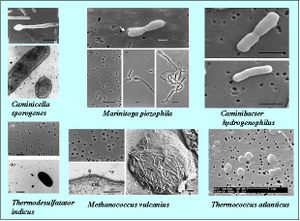Bacillus amyloliquefaciens: Difference between revisions
| Line 9: | Line 9: | ||
==Description and Significance== | ==Description and Significance== | ||
''Bacillus amyloliquefaciens'' is a gram positive soil bacteria closely related to the species ''Baciullus subtilus''. The two species share many homologous genes and appear so similar it is not possible to visually separate the two species. [[#References | [1]]] | ''Bacillus amyloliquefaciens'' is a gram positive soil bacteria closely related to the species ''Baciullus subtilus''. The two species share many homologous genes and appear so similar it is not possible to visually separate the two species. [[#References | [1]]] This species is also the source of the commercially available restriction enzyme BamHI which cuts at the palindrome CGATCC.[[#References | [2]]] | ||
==Structure, Metabolism, and Life Cycle== | ==Structure, Metabolism, and Life Cycle== | ||
Revision as of 23:12, 20 July 2013
Classification
Bacteria; Firmicutes; Bacilli; Bacillales; Bacillaceae; Bacillus
Bacillus amyloliquefaciens
Description and Significance
Bacillus amyloliquefaciens is a gram positive soil bacteria closely related to the species Baciullus subtilus. The two species share many homologous genes and appear so similar it is not possible to visually separate the two species. [1] This species is also the source of the commercially available restriction enzyme BamHI which cuts at the palindrome CGATCC. [2]
Structure, Metabolism, and Life Cycle
Interesting features of its structure; how it gains energy (how it replicates, if virus); what important molecules it produces (if any), does it have an interesting life cycle?
Ecology and Pathogenesis
Natural habitat (soil, water, commensal of humans or animals?)
If relevant, how does this organism cause disease? Human, animal, or plant hosts? Important virulence factors, as well as patient symptoms.
References
[1] Priest, F., Goodfellow, M., Shute, L., and Berkeley, R. 1987. "Bacillus amyloliquefacieness sp. nom., nom. rev." International Journal of Sytematic Bacteriology. 37: 69-71. http://ijs.sgmjournals.org/content/37/1/69.full.pdf
[2] Roberts, R., Wilson, G., and Young, F. 1977. "Recognition sequence of specific endonuclease BamHI from Bacillus amyloliquefacienss H". Nature. 265: 82-84. http://www.nature.com/nature/journal/v265/n5589/abs/265082a0.html
Author
Page authored by Michael Muradian, student of Mandy Brosnahan, Instructor at the University of Minnesota-Twin Cities, MICB 3301/3303: Biology of Microorganisms.

